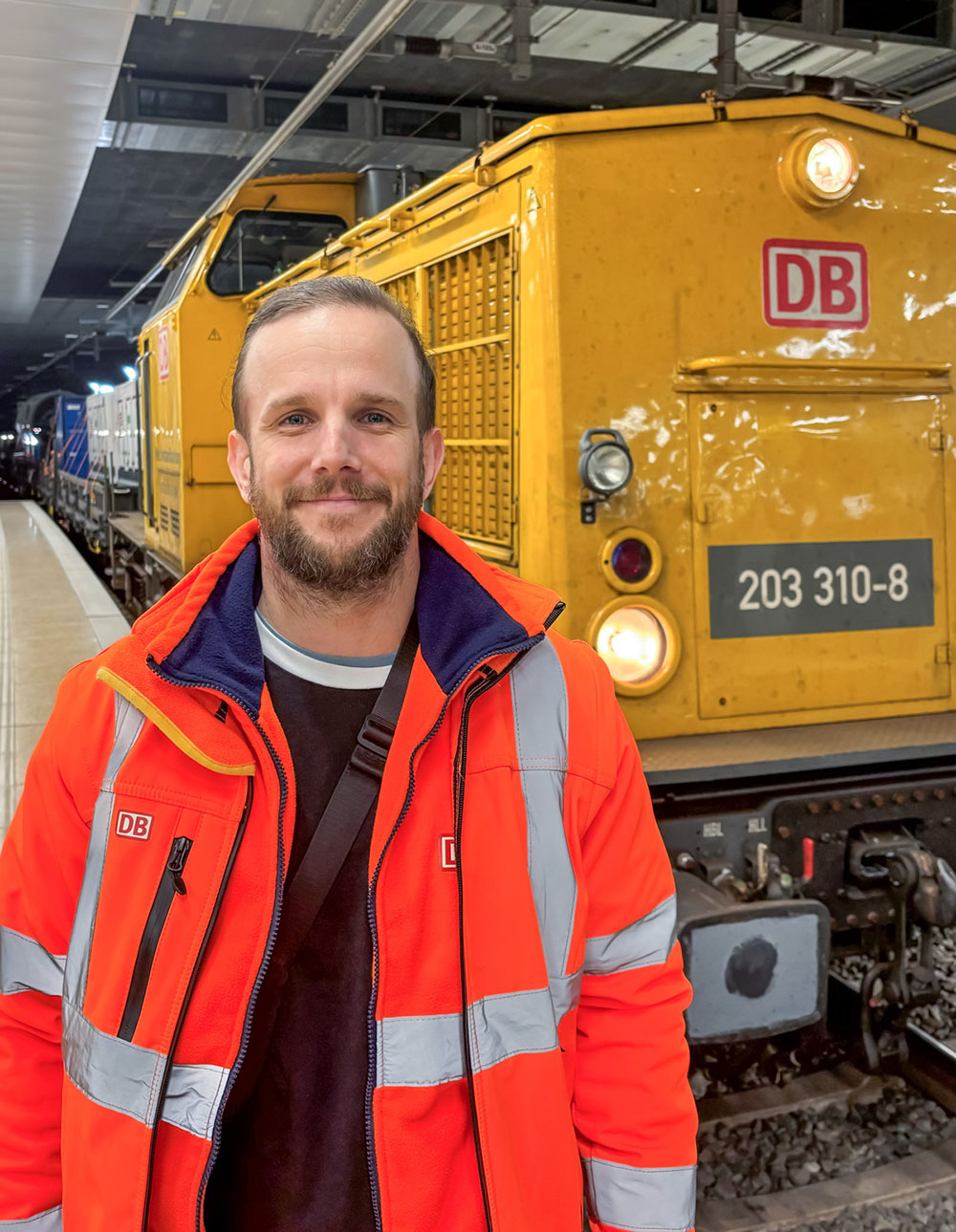Rail is considered one of the most climate-friendly modes of transport. In Germany, however, it is often criticized.
A guest article by Dr. Sascha Reinkober, Head of Large-Scale Machinery Deployment at DB InfraGO AG.
A guest article by Dr. Sascha Reinkober, Head of Large-Scale Machinery Deployment at DB InfraGO AG.
Delays, cancellations, disgruntled travelers – our railway infrastructure demands a lot from our customers in terms of quality and capacity. Since the rail reform of 1994, operating performance has increased by an impressive 27 percent, while the network has shrunk by 15 percent. Despite this development, DB InfraGO operates the largest rail network in Europe today in what is known as mixed traffic. This means that freight transport, local public transport and long-distance passenger transport share the same infrastructure. On more than 33,000 kilometers of track in Germany, an average of 50,000 trains from more than 450 railway companies are on the move every single day. This high frequency of trains and some very long train connections – the longest rail route between Hamburg and Munich via Frankfurt Airport is 1,301 kilometers – place the highest demands on operational stability. Rail traffic flows like a string of pearls: As soon as one element comes to a standstill, the entire chain is affected.
Our task at DB InfraGO AG is to design this complex rail network for optimal performance and to maintain it in the long-term. This includes creating timetables, operational management, construction management, maintenance and the continuous development of the rail infrastructure. In doing so, we follow the premise of »Driving and Building« and implement a nationwide optimally synchronized timetable for passenger and freight traffic with the »Deutschlandtakt«. Our aim is for long-distance trains to arrive in Germany’s largest cities every 30 minutes in the future, always at the same time. Regional transport connections will then be adapted to this schedule. With that we provide better connections, shorter transfer times and more reliable services, even in rural areas. In addition, this type of regular-interval timetable helps us to identify bottlenecks in the rail network at an early stage, prioritize certain trains and implement the necessary infrastructure measures systematically.
The latter not only includes new construction and expansion projects, but also maintaining the highly stressed rail network: inspection, maintenance and repair of tracks, switches and signals. Here, too, we work in intervals. A large part of our maintenance work on large-scale machine technology takes place in regularly scheduled and planned periods, mainly at night during track possessions (periods of time when the tracks are closed for maintenance) between 10 p.m. and 5 a.m. We use highly specialized rail grinding and milling trains to proactively and reactively repair worn tracks and switches, inspect bridges and tunnels, and stabilize tracks with tamping and renovation work. With these continuous and systematic measures, we reduce the likelihood of disruptions, avoid delays in operations due to areas with speed restrictions or even train cancellations, and contribute significantly to ensuring that trains run as smoothly as possible during the day.
But mobility is more than just transportation. DB InfraGO AG is also responsible for designing and operating around 5,400 stations throughout Germany. To improve and enhance the quality of travelers’ time spent at these, we work together with federal states and municipalities, authorities and railway companies to develop attractive stations that are not just functional stops, but also customer- and service-oriented destinations that invite travelers to linger. A good example is Leipzig Central Station, which, as the largest terminus station in Europe, is also an architectural highlight and features over 140 shops and restaurants.
In all our efforts to improve both the quality of the rail network and the stations, focusing on the public good of the railway infrastructure has been more important than ever since 2024. This means that we consistently align the management and expansion of the infrastructure with the needs of citizens, the economy and the environment. Our interaction with the German Federal Government as the owner of Deutsche Bahn is central here: The Federal Government formulates political goals for the infrastructure based on the common good and ensures financing. DB InfraGO AG implements these goals efficiently and transparently. Our timetable for the next few years is set: We want to double our passenger transport volume, expand our rail freight transport market share from 19 to 25 percent, implement the Deutschlandtakt – and ultimately ensure that even more transportation is diverted to our environmentally friendly railways.

was a research scientist and most recently head of the Manufacturing Technologies department at Fraunhofer IPK. After completing his doctoral degree, he joined Deutsche Bahn in 2020 and has been managing the deployment of large-scale machinery at DB InfraGO AG since August 2024. His team of more than 200 employees mostly works at changing locations throughout Germany, 95 percent of the time in night shifts. Reinkober naturally travels by train both privately and for work. »I have come to appreciate being able to go for a coffee, stretch my legs or even work on the train«, he says, but he also admits to adapting his travel plans to the reliability of the train connections. His recommendation: »I usually travel very early in the morning or very late at night because the trains are more punctual then. I also try to avoid transfers and accept a longer travel time instead.«